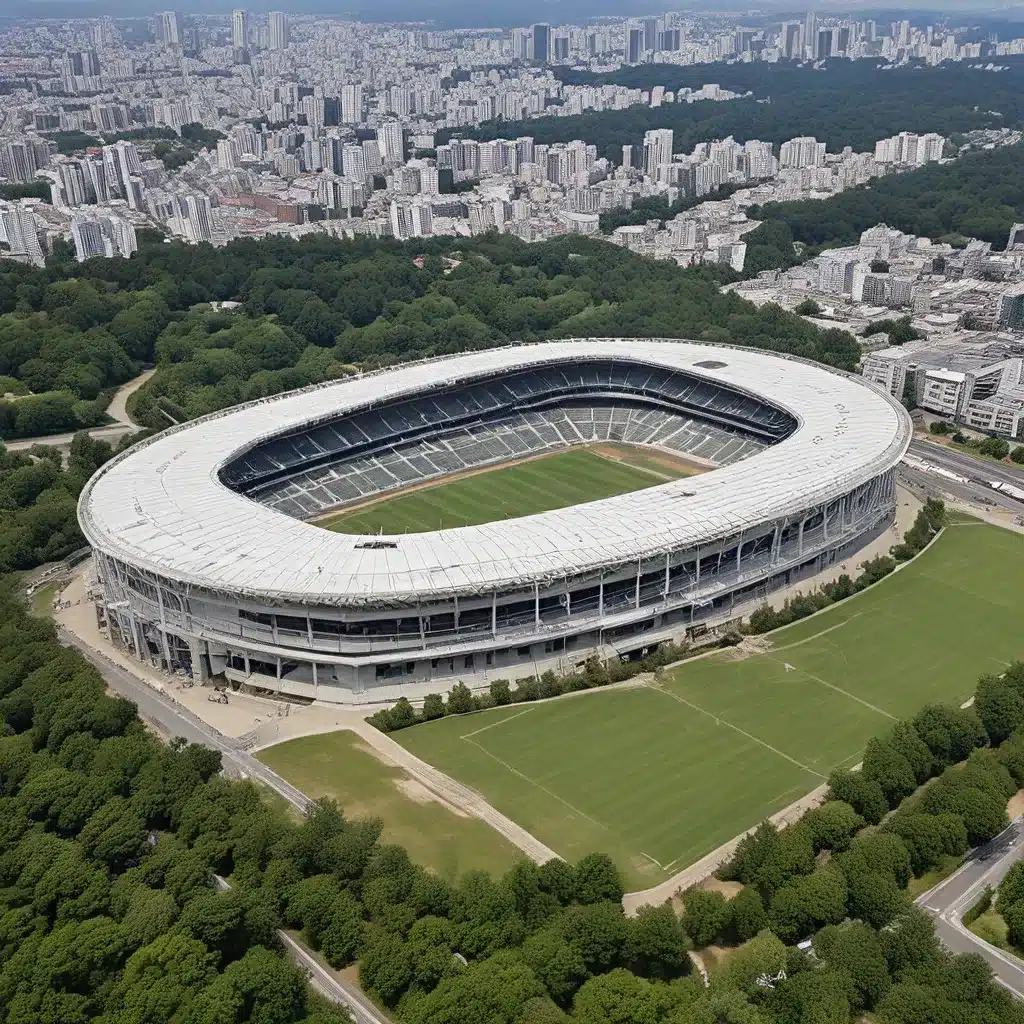
The Humble Beginnings of Toyama Stadium
Toyama Stadium, also known as Daiichi Seimei Stadium, stands as a testament to Japan’s rich sporting heritage. This multi-purpose facility, located in the heart of Toyama City, has witnessed the evolution of the country’s athletic landscape, playing host to a wide range of events since its inception.
The stadium’s origins can be traced back to the early 20th century, when it was initially constructed as a simple outdoor field for local community sporting activities. Over the decades, the facility underwent a series of expansions and renovations, gradually transforming into the modern, state-of-the-art venue it is today.
One of the key drivers behind Toyama Stadium’s development was the growing popularity of soccer and rugby in Japan. As these sports gained traction among the population, the need for a dedicated venue to host matches and tournaments became increasingly apparent. The stadium’s location, nestled within the bustling city of Toyama, made it an ideal choice for hosting these events, attracting spectators from across the region.
The Architectural Evolution of Toyama Stadium
The architectural design of Toyama Stadium has evolved significantly over time, reflecting the changing demands and preferences of both athletes and spectators. The original outdoor field was gradually enclosed, with the construction of a covered seating area to protect fans from the elements. This was a significant upgrade, as it allowed the stadium to host events year-round, regardless of weather conditions.
As the stadium’s popularity continued to grow, so too did the need for expanded facilities. In the 1960s, the venue underwent a major renovation project, which saw the addition of a running track and improved spectator amenities, such as modern restrooms and concession stands. These enhancements not only improved the overall fan experience but also enabled the stadium to host a wider range of athletic events, including track and field competitions.
The most recent renovations to Toyama Stadium, completed in the early 2000s, have further solidified its status as a modern, highly-functional facility. The installation of a state-of-the-art artificial turf field has made the stadium more versatile, allowing it to host a variety of sports, from soccer and rugby to American football and baseball. Additionally, the addition of luxury suites and enhanced lighting systems have improved the overall spectator experience, making Toyama Stadium a premier destination for sports enthusiasts and event organizers alike.
The Haunted Legends of Toyama Stadium
Despite its storied past and impressive facilities, Toyama Stadium is also rumored to be haunted by the spirits of past athletes and spectators. These supernatural tales have been the subject of much debate and discussion among the local community, with some individuals claiming to have witnessed unexplained phenomena within the stadium’s walls.
One of the most commonly reported paranormal activities is the sound of disembodied voices echoing through the empty corridors, often heard late at night when the stadium is closed to the public. Some have even claimed to see the faint silhouettes of figures moving across the field or standing in the stands.
While these ghost stories have captivated the imagination of many, it’s important to note that the paranormal activity at Toyama Stadium remains unconfirmed. Many experts and skeptics attribute these ghostly sightings to natural phenomena, such as the echoes of wind or the play of shadows in the stadium’s architecture. Nevertheless, the persistent rumors and tales have only added to the stadium’s mystique, attracting curious visitors and paranormal enthusiasts from near and far.
The Role of Toyama Stadium in Japan’s Sports History
Toyama Stadium has played a significant role in the development and promotion of sports in Japan. Over the years, the venue has hosted a wide range of sporting events, from professional soccer and rugby matches to high-school athletic competitions and university championships.
One of the stadium’s most notable contributions to Japanese sports history was its role in the rise of the country’s national soccer team. In the early 20th century, when the sport was still gaining popularity, Toyama Stadium served as a training ground for the national team, providing a dedicated space for players to hone their skills and prepare for international competitions.
The stadium has also been the site of several major sporting events, including the 1964 Summer Olympics and the 2002 FIFA World Cup, both of which saw the facility hosting matches and contributing to the overall success of the events. These high-profile competitions not only showcased the stadium’s capabilities but also helped to cement its position as a significant venue in the annals of Japanese sports history.
Preserving the Legacy of Toyama Stadium
As Toyama Stadium continues to evolve and adapt to the changing needs of the sporting community, efforts have been made to preserve its rich history and cultural significance. The stadium’s management team, in collaboration with local historians and sports enthusiasts, have undertaken various initiatives to document the facility’s past and share its stories with the public.
This includes the establishment of a museum within the stadium, which features interactive exhibits and displays that highlight the venue’s architectural evolution, its role in major sporting events, and the legends and myths surrounding its haunted reputation. Visitors to the museum can immerse themselves in the stadium’s history, gaining a deeper appreciation for its enduring legacy and the pivotal role it has played in the development of sports in Japan.
As the world continues to evolve, the team behind Toyama Stadium remains committed to ensuring the facility’s longevity and relevance. By embracing both its storied past and its potential for the future, the stadium is poised to continue serving as a cherished destination for sports enthusiasts and cultural enthusiasts alike, inspiring the next generation of athletes and captivating audiences for years to come.

